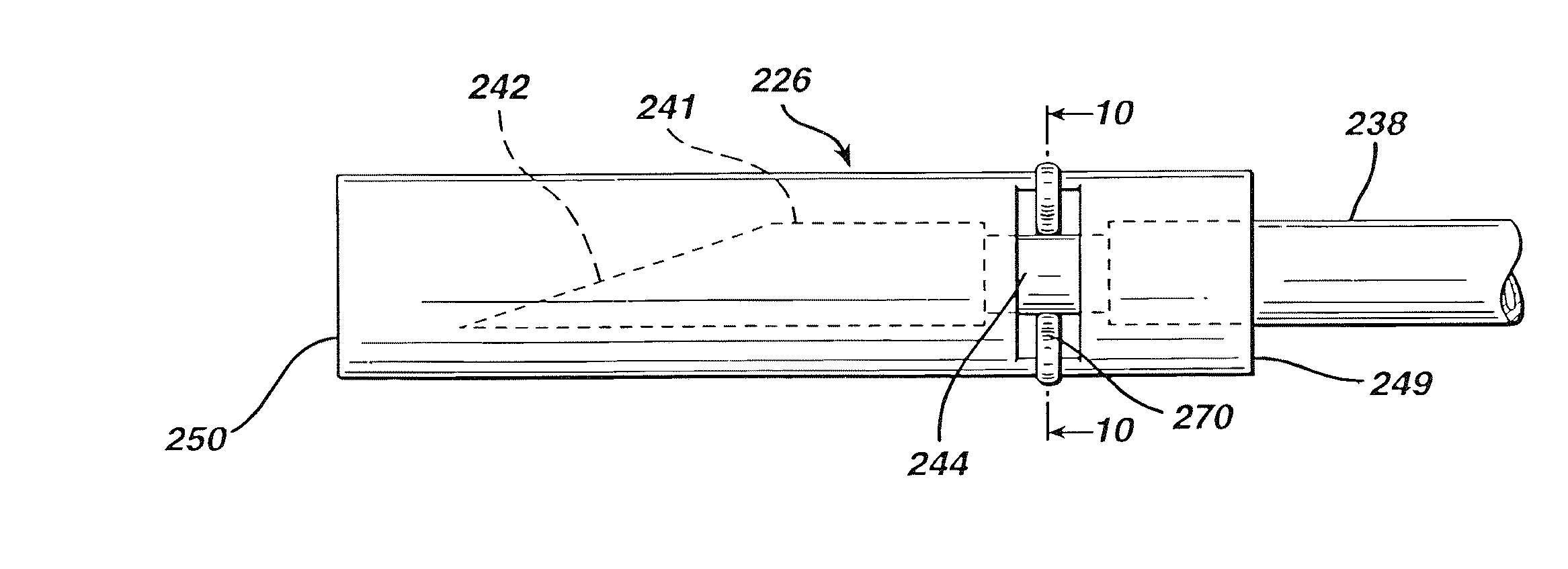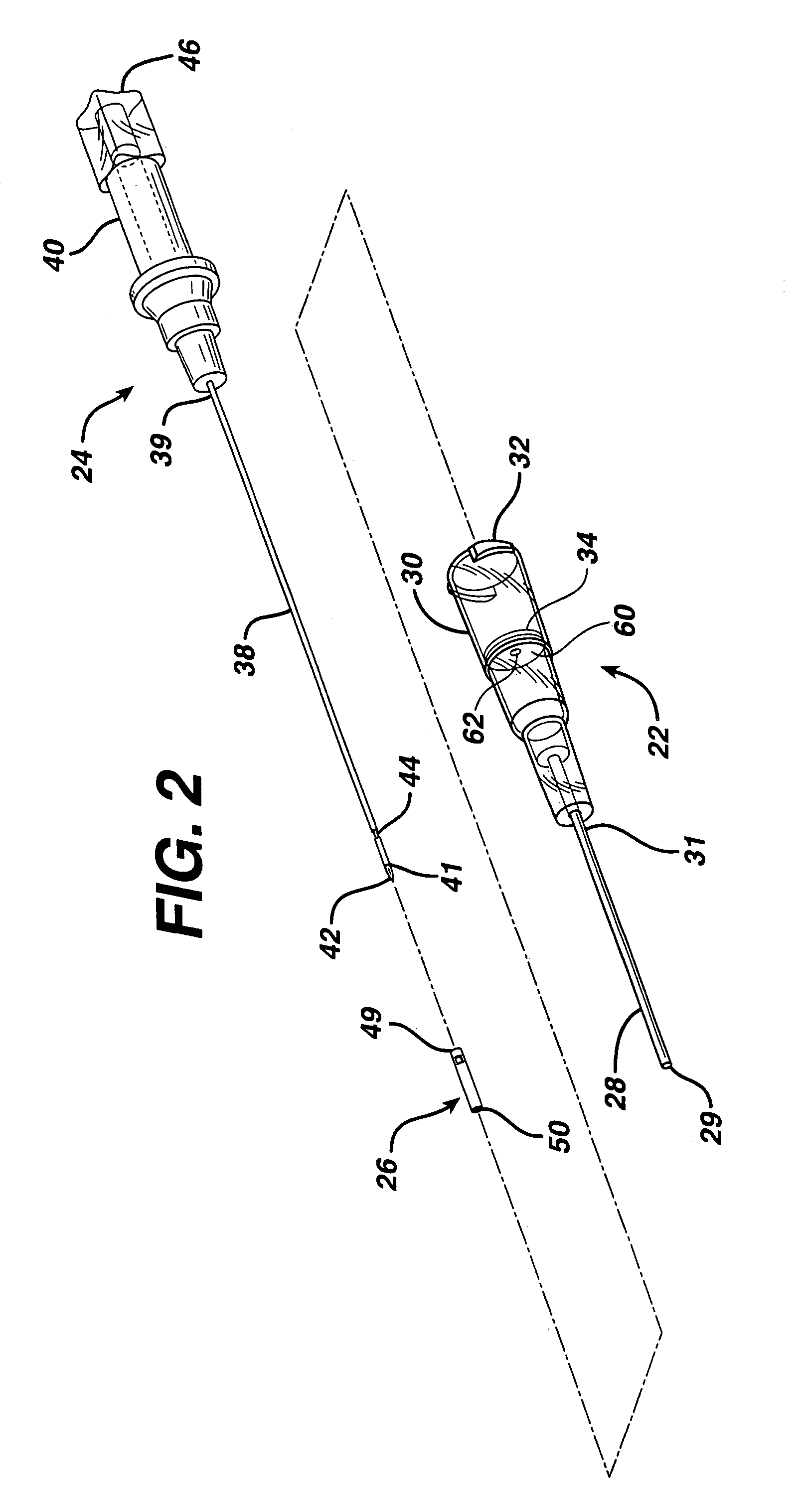Catheter introducer assembly having safety shielded needle
a technology of safety shielding and catheters, which is applied in the field of safe iv catheters with a needle tip protector, can solve the problems of putting other health care workers at risk, and putting others outside, so as to prevent accidental needle sticks
- Summary
- Abstract
- Description
- Claims
- Application Information
AI Technical Summary
Benefits of technology
Problems solved by technology
Method used
Image
Examples
Embodiment Construction
[0024]As used herein, the term “proximal” refers to a location on the catheter and needle assembly with needle tip protector closest to the clinician using the device and thus furthest from the patient on which the device is used. Conversely, the term “distal” refers to a location farthest from the clinician and closest to the patient.
[0025]As illustrated in FIGS. 1 and 2, IV catheter assembly 20 comprises catheter assembly 22 and needle assembly 24. Needle assembly 24 further includes protector 26. Catheter assembly 22 includes catheter 28 which is a tubular structure having a proximal end 31 and distal end 29. Proximal end 31 of catheter 28 is fixedly attached to catheter hub 30. Catheters are well known in the medical art and one of many suitable materials, most of which are flexible thermoplastics, may be selected for use in catheter 28. Such materials may include, for example, polyurethane or fluorinated ethylene propylene. Catheter hub 30 is a generally tubular structure havin...
PUM
 Login to View More
Login to View More Abstract
Description
Claims
Application Information
 Login to View More
Login to View More - R&D
- Intellectual Property
- Life Sciences
- Materials
- Tech Scout
- Unparalleled Data Quality
- Higher Quality Content
- 60% Fewer Hallucinations
Browse by: Latest US Patents, China's latest patents, Technical Efficacy Thesaurus, Application Domain, Technology Topic, Popular Technical Reports.
© 2025 PatSnap. All rights reserved.Legal|Privacy policy|Modern Slavery Act Transparency Statement|Sitemap|About US| Contact US: help@patsnap.com



